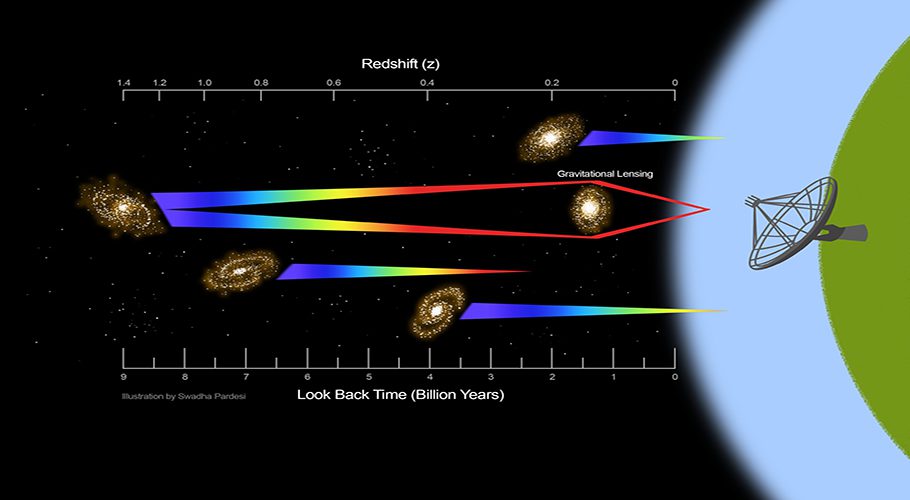“A galaxy emits different kinds of radio signals. Until now, it’s only been possible to capture this particular signal from a galaxy nearby, limiting our knowledge to those galaxies closer to Earth,” says Arnab Chakraborty, a Post-Doctoral Researcher at McGill University under the supervision of Professor Matt Dobbs.
Also read: Scientist make device to harvest water from air, generate hydrogen fuel
“But thanks to the help of a naturally occurring phenomenon called gravitational lensing, we can capture a faint signal from a record-breaking distance. This will help us understand the composition of galaxies at much greater distances from Earth,” he adds.
Using GMRT data, Arnab Chakraborty, post-doctoral researcher at the Department of Physics and Trottier Space Institute of McGill University, and Nirupam Roy, Associate Professor, Department of Physics, IISc, have detected a radio signal from atomic hydrogen in a distant galaxy at redshift z=1.29.
Also read: NASA discovers planetary system’s second Earth-size world
“Due to the immense distance to the galaxy, the 21 cm emission line had redshifted to 48 cm by the time the signal travelled from the source to the telescope,” says Chakraborty. The signal detected by the team was emitted from this galaxy when the universe was only 4.9 billion years old; in other words, the look-back time for this source is 8.8 billion years.
Also read: Hubble Telescope captures stunning globular star cluster
This detection was made possible by a phenomenon called gravitational lensing, in which the light emitted by the source is bent due to the presence of another massive body, such as an early type elliptical galaxy, between the target galaxy and the observer, effectively resulting in the “magnification” of the signal. “In this specific case, the magnification of the signal was about a factor of 30, allowing us to see through the high redshift universe,” explains Roy.





































